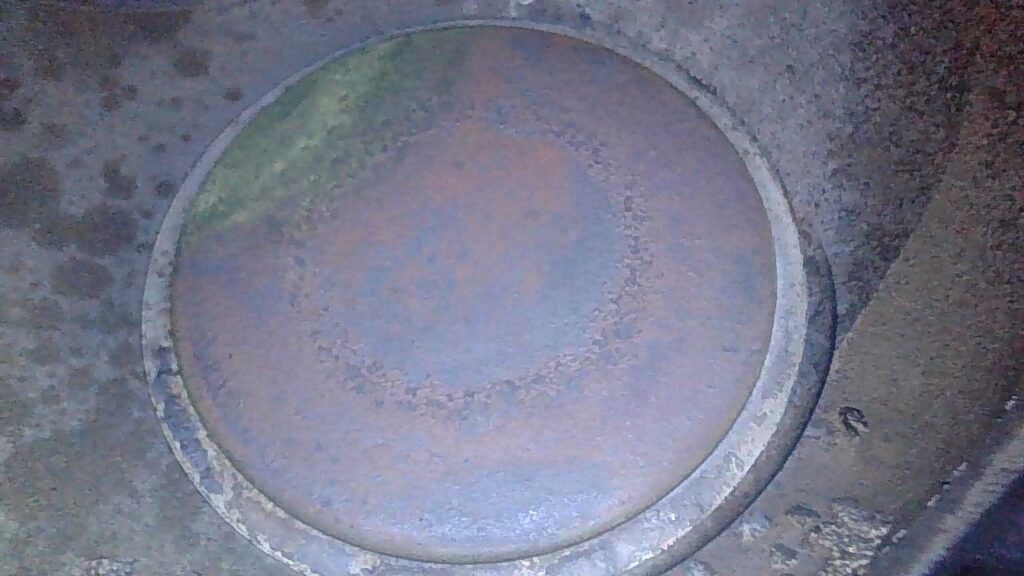Podcast: Play in new window | Download
Dan and Jeanne are some of the nicest people you will ever meet, so it’s always a privilege to work on their airplane.

It was annual inspection time, and the compression test on cylinder #1 was 25/80. The borescope showed a corresponding reason for the low compression… the exhaust valve had an uneven appearance, indicating it was not sealing well against the valve seat, and there was air leakage around the edge, causing that edge to get extra hot and burn… this is the reason for the uneven color pattern at 10 to 11 o’clock in the photo:

I discussed the situation with Dan, and we decided it was worth a try to lap the valve in place without removing the cylinder, in hopes we could save the cylinder from premature removal.
I lapped the valve and installed a new rotocoil to help ensure the valve was rotating properly during operation.
After reassembling everything and running the engine, we got a fantastic result… the compression was now 75/80!
When the annual inspection was completed, I sent the airplane out the door with great confidence the engine would perform well… and it did.
Not long after that, Dan and Jeanne flew the Bonanza to Montana to visit family and then later made the journey back home.
At the time of the annul inspection, Dan had agreed it would be a good idea to inspect the #1 exhaust valve at the next oil change to make sure all was well.
After having flown about 37 hours since the annual and since lapping the #1 exhaust valve, Dan returned to have things checked out.
The oil and filter change were completely normal; the compression in cylinder #1 was 77/80; and the borescope revealed the #1 exhaust valve had returned to normal!
Check it out: the circular patterns on the valve are now nice and concentric.

I’m hopeful Dan will get many more hours of reliable service out of this cylinder since we stopped the harmful trajectory of a burning exhaust valve.
On another note, I discussed a couple things in this episode that I noticed this past week while flying.
- One was related to NOTAMs and the importance of being aware of them (along with something I discovered about NOTAMS, approach plates, and ForeFlight.)
- The other one was a tip about starting PT-6 engines when they are still hot after a quick stop to drop off passengers and refuel.
In my research, I discovered an online course about NOTAMs, and I wanted to pass this link along for anyone who might be interested:
This is a course by Sarah Fritts. I do not know Sarah, and I do not receive any compensation from this course, but it seems like a good training resource, and I like to help promote those when I see them.
You can also learn more about Sarah over at her website:
The post “228 – Saving a Cylinder on Dan & Jeanne’s Bonanza” appeared first at AirplaneOwnerMaintenance.com


Recent Comments